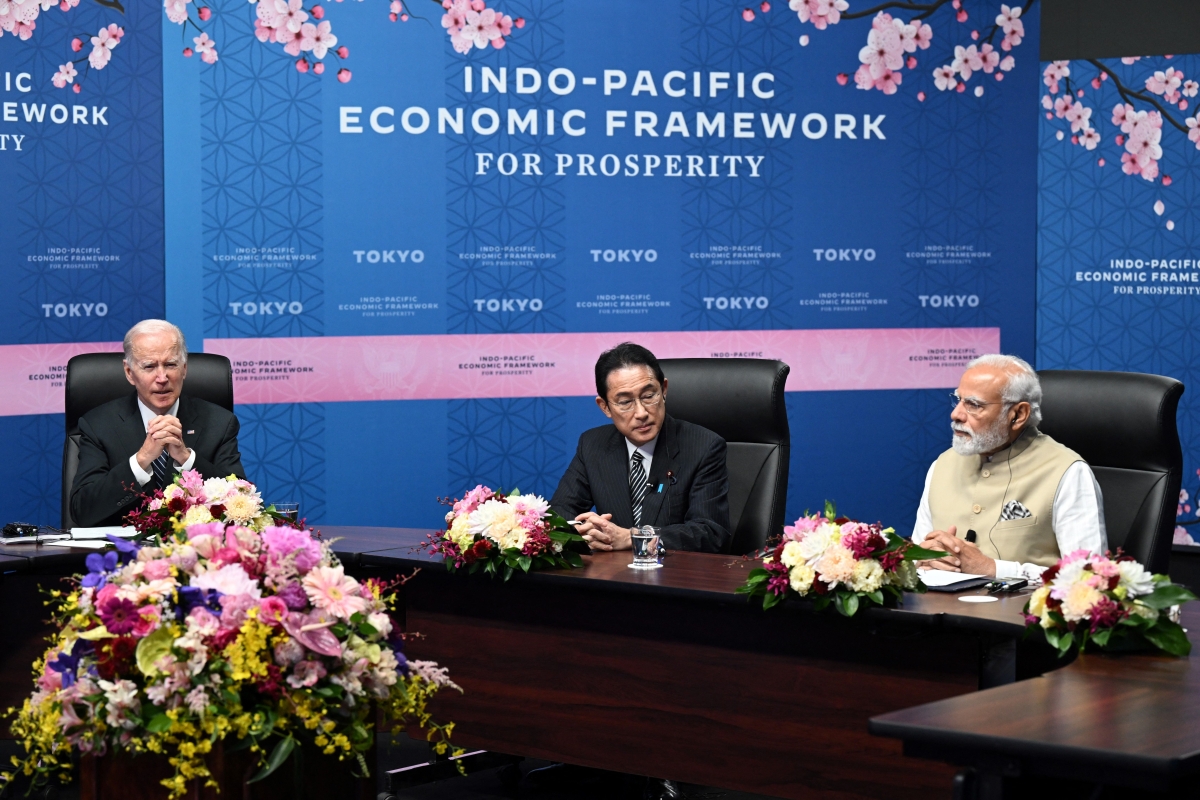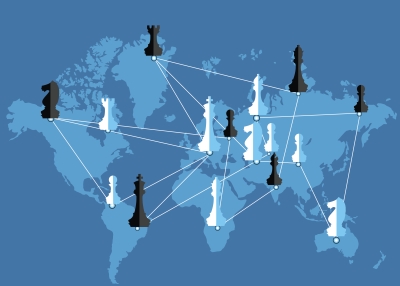ASPI Note: Biden's Blueprint for Economic Engagement in the Indo-Pacific

May 24th, 2022 by Wendy Cutler and Shay Wester
What's happened: On May 23 in Tokyo, President Joe Biden launched the Indo-Pacific Economic Framework for Prosperity (IPEF), the administration’s long-awaited initiative for economic engagement in the region and a crucial component of its broader Indo-Pacific Strategy outlined earlier this year. The most striking aspect of the announcement was the participation of a dozen other Indo-Pacific countries, an achievement that looked doubtful just a few weeks ago. Launching an initiative that brings together the United States, India, and the major ASEAN economies is a major accomplishment and underscores the importance America’s partners attach to Washington stepping up its economic game in this dynamic region.
Background: Since the United States exited the Trans-Pacific Partnership in January 2017, there has been a steady march of new trade agreements, most notably the Comprehensive and Progressive Agreement for Trans-Pacific Partnership (CPTPP) and the Regional Comprehensive Economic Partnership (RCEP), across the Indo-Pacific region that do not include the United States. This has taken place as the Indo-Pacific region’s growth trajectory has continued to transform it into the center of gravity for 21st century trade, innovation, and connectivity.
First previewed by President Biden last October at the East Asia Summit, IPEF is not a traditional trade agreement. Its scope goes beyond trade by including issues within four pillars: fair and resilient trade; supply chain resiliency; clean energy, decarbonization, and infrastructure; and taxation and anti-corruption.
- The centerpiece of the fair and resilient trade pillar will be on the digital economy, where a number of bilateral and regional agreements have been concluded in recent years. Digital technologies touch all sectors of the economy and this pillar seeks to craft the new rules of the road for the digital age. Topics will include standards on cross-border data flows and data localization, digital inclusion, online privacy, and the use of artificial intelligence. In line with the administration’s worker-centered trade policy, labor and environmental commitments will also be an integral part of this pillar, which often have been the most difficult for many U.S. partners to embrace.
- A supply chain resiliency pillar will focus on coordinating supply chain diversification among participants and increasing transparency to avoid disruptions. The Framework envisions new information-sharing tools such as an early warning system and improved data on critical mineral supply chains.
- The clean energy, decarbonization, and infrastructure pillar covers initiatives to take action on climate and also address the sizable infrastructure gap in the Indo-Pacific. The Framework proposes new commitments in areas such as renewable energy, strengthening energy efficiency, and reducing methane emissions.
- A final pillar on taxation and anti-corruption will include commitments to combat corruption through sharing of tax information as well as enhanced enforcement of anti-money laundering and anti-bribery regimes.
Responses from Regional Partners: Largely unexpected, the IPEF announcement included 12 other countries in the region: Australia, Brunei, India, Indonesia, Japan, Korea, Malaysia, New Zealand, the Philippines, Singapore, Thailand, and Vietnam.
- This achievement reflects successful U.S. diplomacy. Many of those signing up to the initiative, particularly those from Southeast Asia, were highly skeptical of IPEF just weeks ago.
- This skepticism has been based on concerns about (1) tariff cuts being off the table; (2) fear that the next administration will disavow the initiative; and (3) uncertainty on what exactly they were being asked to do.
- Despite skepticism, many partners are eager for increased U.S. economic engagement in the region, even as they strongly advocate for the U.S. to return to the CPTPP. At a joint press conference with President Biden, Japan’s Prime Minister Fumio Kishida stated, “we are truly hoping for return of the United States,” echoing similar comments by other leaders. That said, partners see U.S. engagement under the IPEF as a counterweight to increased Chinese economic activity and influence in the region.
- For example, India was initially reluctant to join IPEF, as its latest preference is to negotiate bilateral trade deals, but it was convinced to come on board due to the belief that this will help the Indian economy compete with China. The fact that IPEF is not a free trade agreement made it more palatable for India to join and will complement India’s existing initiatives, as well as India’s work with the U.S. in the Quadrilateral Security Dialogue.
- All major Southeast Asian economies signed on, welcoming the administration’s decision not to dictate substance at this juncture but to shape the detail of the pillars in close consultation with them. A flexible structure, a desire not to be excluded, and a strong interest in attracting further foreign direct investment combined to create important momentum following the recent U.S.-ASEAN Special Summit.
- Despite strong calls from Congress for Taiwan’s inclusion, this did not happen. Such a move would have led others to opt out in fear of the Chinese reaction. Meanwhile, the administration is focused on further strengthening bilateral economic ties with Taiwan.
- As the U.S. strengthens its economic activity with Indo-Pacific partners, China is likely to bolster its own partnerships. Following the launch, Foreign Minister Wang Yi made this clear stating, “China will firmly promote development in the Asia-Pacific. While expanding high-level opening-up, China is striving to advance high-quality Belt and Road cooperation, facilitate connectivity in the Asia-Pacific, and ensure safe and stable functioning of industrial and supply chains in the region.” Minister Wang went on to emphasize China’s implementation of RCEP and active efforts to join CPTPP and the Digital Economy Partnership Agreement (DEPA).
What’s Next: With a successful launch behind it, the administration now starts the hard work of putting meat on the bones of the four pillars of the initiative. IPEF members will meet over the coming weeks to reach an agreement on the negotiating agenda and parameters for each pillar, with a ministerial meeting expected this summer to launch the actual negotiations. This will be challenging because the 12 countries signing on to IPEF have different views on specifics, level of ambition, and whether this initiative should be solely focused on cooperative efforts or should contain binding provisions as well. They will also face domestic pressure to show tangible benefits that IPEF will bring to their own citizens.
The administration has set a 12 to 18-month timeframe for IPEF to produce results, taking them to the Asia-Pacific Economic Cooperation November 2023 Leaders meeting which the United States will host. Washington has also not ruled out the possibility of “early harvest” agreements to help build momentum.

